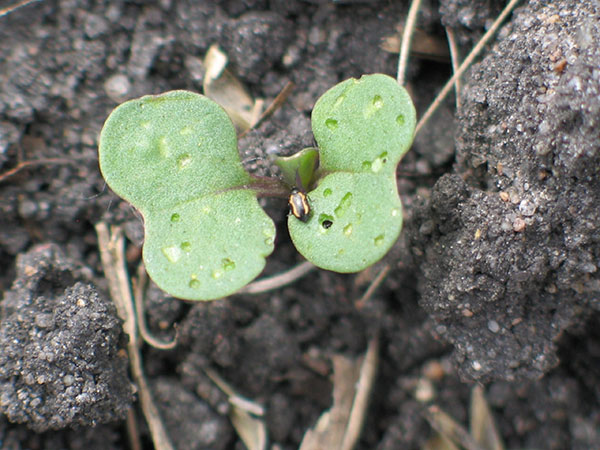A new peace of mind with BUTEO start
Apr 16, 2021
In April of 2019, Krista Anderson
found a flea beetle in her hair. “In April! In Saskatoon!” she laughs. It’s
funny, but it’s also a telling sign of how the life patterns of this insect are
changing.
“Their actual lifecycle hasn’t
changed at all,” says Anderson, an Agronomic Solutions Manager specializing in SeedGrowth
with Bayer’s Field Solutions team. “But there has been a shift in the dominant
organism and their range has moved further south.”
Striped flea beetles, which used to
be associated more with northern regions, are now found throughout all canola-growing
areas on the Prairies, and in many areas have overtaken crucifers as the main
species affecting emerging canola crops.
 Source: Canola Council of Canada
Source: Canola Council of Canada
It’s significant in that striped
flea beetles emerge earlier than crucifers, up to four weeks earlier
1,
and they can withstand tougher environmental conditions. “One theory as to why
they have become dominant is that thiamethoxam and clothianidin were so
effective on crucifers that striped flea beetles were given an advantage,” says
Anderson.
It is just a theory, and what
matters most is not so much why the change in flea beetle populations occurred,
but that it has and what farmers can do about it.
The
power of adaptation
Anderson says that, along with the
shift in dominant species, flea beetle populations overall are becoming more
abundant. “One thing we’re seeing more is late season feeding,” she says. “My
theory is that’s down to the sheer numbers of them, the high populations.
They’re just proliferating.”
Warmer winters from climate change also
play a role – they’re just not getting cold enough for long enough to count on
good winterkill. “Things we used to get away with in the past we can’t get away
with anymore,” says Anderson.
Indeed, good crop rotations and
cold winters used to be enough to keep flea beetle populations in check and
farmers rarely had to worry if their seed was treated. But Anderson says this
just isn’t the case today.
In fact, input suppliers offer free
over-sprays should flea beetles outstrip the seed treatment – something that
used to be a lot less common. “People who had no flea beetles before are now
having to spray,” she says.
“This goes for any pest,
whether it’s an insect or not,” says Anderson. “They’re shifting and adapting
to the conditions and growers are dealing with a lot of what used to be
non-traditional issues in canola.”
A
new tool for new times
An insecticidal seed treatment is
still the best defense against flea beetles, but with the early emergence of
striped flea beetles and the expanded range for all species, seed treatments
are being asked to do more than they ever have.
Anderson thinks BUTEO™ start may be up to the challenge. “We know it works on the same receptors that
thiamethoxam and clothianidin do, but the chemical structure of BUTEO start is significantly
different and so it binds differently to that receptor,” she says, explaining
that while those products are Group 4 insecticides, BUTEO start is the only
Group 4D in this category.
Two things make it different.
First, BUTEO start is taken up very quickly by emerging canola plants, even in
conditions that are cooler or drier. “That rapid uptake leads to faster
translocation through the plant tissue so it’s protected from the moment it
emerges,” says Anderson.
Its rapid uptake and translocation results
in strong crop emergence and robust stand establishment, setting the crop up
for maximum yield potential.
In the 2020 crop year, Anderson
says this was evident in the field. “We saw a significant impact on the number
of acres reseeded due to insect damage,” she says, adding that crops treated
with BUTEO start will likely need far fewer over sprays than crops treated with
other seed treatment insecticides.
“In terms of the value of a product
like this, you have to ask yourself what that does to your stress level when
you have to spray for flea beetles,” says Anderson. Even if flea beetle feeding
damage didn’t reach the economic threshold for spraying, there’s always a
question mark around whether the crop would have matured more evenly or had
less green seed if it had been better protected from the start.
Unlike most canola seed treatments,
growers can choose BUTEO start as an additional treatment to their canola seed.
“If you’re not happy with your current insecticide, try this,” says Anderson.
“You still need to manage all risks to your crop, but BUTEO start is another
tool to add to your toolbox.”
--
1 Canola Council of Canada, Canola Encyclopedia